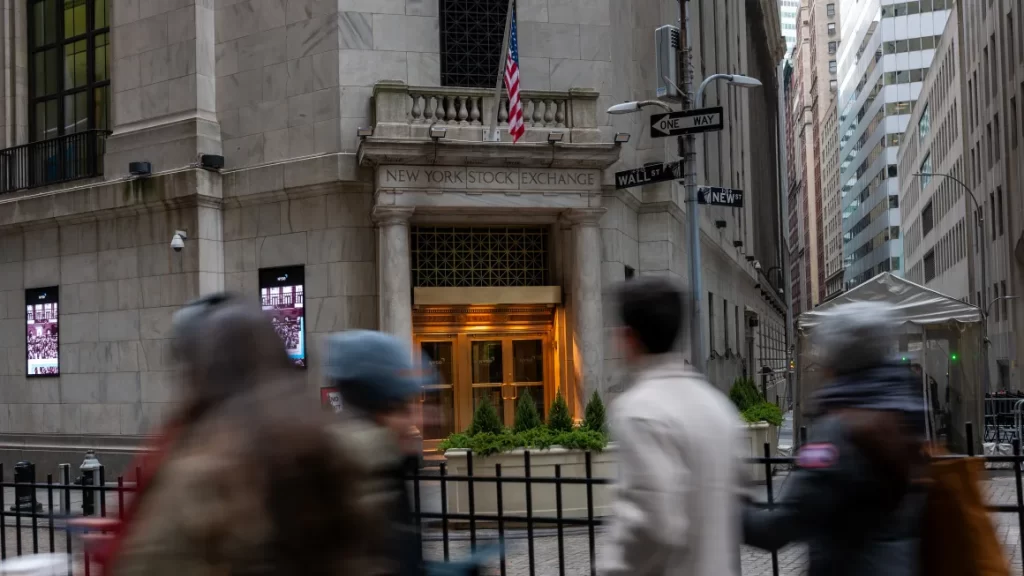US-based corporations are making more money than ever before, and they’re putting that money right back into shareholders’ pockets. One of the reasons the S&P 500 is up more than 10% so far this year is because investors expect dividends — a redistribution of profits from a company to its shareholders — to get bigger.
Dividend payouts to shareholders by companies in the S&P 500 reached a new record in 2023, and that number is projected to grow in 2024, according to data from the CME Group.
What’s happening: The 200 largest publicly traded companies in the United States saw their combined net profits soar to $1.25 trillion in 2022, a gain of 63% from 2018. About 90%, or $1.1 trillion, of that profit went to shareholders through stock buybacks and dividend payments, according to new research from anti-poverty organization Oxfam International.
At the same time, the study found, only 10 of those 200 companies have made public statements in support of paying a living wage.
In contrast, CEO pay — often bolstered by company shares — has soared by nearly a third for those companies since 2018, according to Oxfam. For some of those companies, the average CEO-to-worker pay ratio is now above 1,500 to 1, the nonprofit confederation found.
Critics of buybacks say they allow ultra-wealthy executives to manipulate markets while funneling corporate profits to themselves instead of workers. Preventing or restricting share repurchases, they argue, would free corporate cash to invest more in growth and raise wages.
Corporations counter that they use stock repurchases to efficiently distribute excess capital. Limiting buybacks, say supporters, could reduce the liquidity in stock markets and hurt share prices. Executives typically use buybacks to reduce the number of shares in the market, thus increasing demand for the stock and earnings per share.
Exacerbating inequality: Oxfam, in a report compiled using publicly available data, argued that the largest US firms have also reinforced gender and racial inequality in the workplace by prioritizing buybacks and dividend boosts over their own employees’ well-being.
“You now have eight billionaires owning what half of the population owns, and we’ll likely see a trillionaire within the next decade. These are just unbelievable numbers that indicate we are in a new Gilded Age,” said Irit Tamir, senior director of Oxfam America’s private sector department. According to the charity, the eight richest people in the world combined have greater wealth than the poorest 50%.
Oxfam’s report — collected by analyzing companies’ 10-Ks, proxy statements and other public data — found that the retail sector, which is the most demographically diverse in the country, was also the least equal.
More than half of retail employees are people of color and nearly 60% are women. But of the sector’s executives, about 70% were white and 78% were male. At the same time, the study found, retail and food and beverage companies paid the lowest median salaries out of any sector in 2022 — below $20,000 a year.
Increased tax avoidance: President Joe Biden, in his 2025 budget proposals, has targeted the richest Americans and outlined plans for a 25% tax on those with more than $100 million in wealth.
“No billionaire should pay a lower tax rate than a teacher, a sanitation worker, a nurse,” he said in his State of the Union address on March 7.
Corporations are also managing to avoid high tax rates, according to a recent analysis from the Institute for Policy Studies and Americans for Tax Fairness. The analysis found that executives at some large US companies earned more money between 2018 and 2022 than their businesses paid in federal taxes.
Oxfam’s study found that on average, pharmaceutical companies paid just 11.6% in taxes in 2022 (that’s down from 11.8% in 2021). The US corporate tax rate is 21%, but there are a variety of legal ways for corporations and individuals to lower their tax bills.
— CutC by bbc.com


